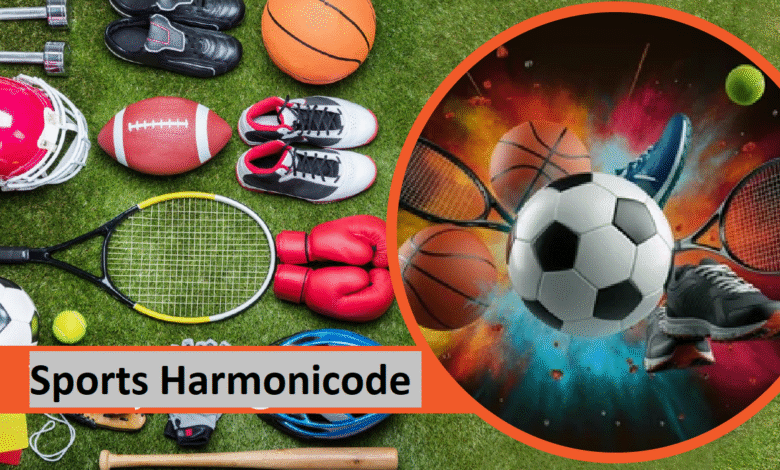Sports Harmonicode: The Future of Athletic Performance and Digital Integration

Introduction to Sports Harmonicode
Sports Harmonicode have always been more than just physical activity—they’re a blend of skill, strategy, and discipline. But in the modern era, sports are also influenced by technology and innovation. One of the emerging concepts making waves in the athletic and tech communities is sports harmonicode. While the term might sound futuristic, it’s essentially about the synchronization of sports performance with digital coding, algorithms, and harmonic principles. Think of it as the meeting point between physical movement and technological intelligence.
Sports harmonicode is rooted in the idea that every movement in sports can be broken down into data—whether it’s the angle of a football kick, the harmonic rhythm of a basketball dribble, or the pacing of a runner. By coding these movements into measurable sequences, athletes and trainers can decode performance, find inefficiencies, and optimize strategies. It’s the next evolution of sports science, where data meets harmony.
At its core, sports harmonicode focuses on balance and synchronization. Athletes who can align their natural movements with harmonic data patterns gain an edge in precision and efficiency. This is not just a theory; many professional teams and athletes are already experimenting with advanced data analytics to track their rhythm, biomechanics, and performance flow. Harmonicode takes this concept even further by translating it into a more refined system.
The Science Behind Sports Harmonicode
Sports harmonicode isn’t just a catchy buzzword—it has deep scientific foundations. It combines biomechanics, data coding, and harmonic resonance principles. Biomechanics studies the way our muscles, joints, and bones move. Harmonic resonance examines how rhythm and balance influence movement. When these two are fused with digital coding, we get a precise framework for analyzing athletic performance.
For instance, consider a tennis serve. Traditional training focuses on power, accuracy, and consistency. But when viewed through the lens of harmonicode, the serve becomes a series of coded data points: body rotation, wrist movement, ball toss angle, and even foot positioning. These elements can be analyzed as harmonic patterns. If one element is out of sync, the “code” is broken, and the serve becomes less effective. This way, athletes can see their game not just as a skill but as a system of harmonious codes.
Another important aspect is how harmonicode leverages wearable technology. Smart sensors, fitness trackers, and AI-driven apps are already being used in modern sports. With harmonicode principles, these devices can go beyond tracking heart rate and calories—they can measure rhythm, coordination, and balance in real time. Athletes can then get instant feedback on whether their movement aligns with harmonic patterns that maximize efficiency.
Practical Applications in Different Sports

Sports Harmonicode isn’t restricted to a single sport. Its applications can be seen across disciplines, making it a universal concept for athletes, coaches, and sports scientists.
In football (soccer), harmonicode can analyze passing accuracy and running patterns. Imagine a midfielder who always tends to break rhythm while distributing the ball. By applying harmonicode, coaches can identify the misaligned timing and help the player adjust their movements for smoother play. This could be a game-changer for building team chemistry.
Basketball players can also benefit significantly. Shooting, dribbling, and defensive footwork all rely on rhythm and timing. By mapping these movements as harmonic codes, players can train their bodies to maintain balance under pressure. For example, a consistent shooting motion can be broken down into harmonic sequences, ensuring that players replicate the same rhythm every time, even during high-stress moments.
Track and field athletes might have the most direct benefit. Runners, sprinters, and hurdlers thrive on rhythm and pacing. With sports harmonicode, athletes can monitor stride length, cadence, and breathing patterns in harmony. This not only reduces injury risks but also enhances endurance and speed. Over time, small adjustments guided by harmonicode could shave valuable seconds off their performance.
The Role of Technology in Advancing Harmonicode
The rise of sports harmonicode wouldn’t be possible without rapid technological advancements. Artificial intelligence, machine learning, and motion-tracking software all play a critical role in turning theory into practice. AI, for example, can process vast amounts of data collected from an athlete’s performance. By recognizing patterns, it can suggest corrections and improvements aligned with harmonic principles.
Virtual reality (VR) and augmented reality (AR) also offer new frontiers. Athletes can train in virtual environments where their movements are analyzed through harmonicode algorithms. Imagine a basketball player wearing VR goggles that instantly highlight when their shot is out of harmonic sync, allowing for quicker adjustments. This kind of training can make athletes more adaptable and aware of their movements.
Furthermore, blockchain technology is slowly entering the sports space through secure data tracking and performance transparency. In a harmonicode-based training system, blockchain could ensure that data collected from athletes remains tamper-proof, trustworthy, and usable across different platforms. This not only boosts performance but also ensures accountability.
Benefits of Adopting Sports Harmonicode
The benefits of sports harmonicode extend far beyond performance enhancement. One major advantage is injury prevention. By identifying imbalances and irregular rhythms in an athlete’s movements, coaches can intervene before these flaws cause long-term damage. Preventative care is always more effective than reactive treatment, and harmonicode provides that early warning system.
Another benefit lies in mental training. Sports are not just physical; they require focus, confidence, and psychological balance. Harmonicode promotes rhythm and harmony, which can directly impact an athlete’s mental state. Training with harmonic patterns can help athletes remain calm, composed, and confident under pressure. This is particularly useful in sports like tennis, golf, and basketball, where mental stability is often the deciding factor.
Lastly, sports harmonicode fosters inclusivity. Because it focuses on rhythm and harmony rather than just raw physical power, athletes of different body types and abilities can benefit. It opens the door for people who might not fit traditional molds of athletic excellence but who can excel through mastering harmonic principles. This democratizes sports in an exciting way.
Challenges and Future Potential
While the idea of sports harmonicode is revolutionary, it’s not without challenges. One of the main issues is accessibility. Advanced technology like AI-driven wearables and VR training systems can be expensive, making them available only to elite athletes and teams. For harmonicode to truly shape the future of sports, it needs to be affordable and widely accessible.
Another challenge is acceptance. Traditional coaches and athletes may resist adopting a system that seems overly technical. Sports have always had a strong emotional and instinctive side, and introducing coded systems may feel unnatural at first. Overcoming this resistance will require education and real-world success stories.
Looking ahead, the potential is enormous. Sports harmonicode could transform how talent is scouted, how training programs are designed, and even how fans experience sports. Imagine watching a live game with harmonic data displayed on screen, showing the rhythm and synchronization of players in real time. It would not only deepen fan engagement but also bring a whole new dimension to sports broadcasting.
Conclusion
Sports harmonicode represents the perfect blend of tradition and innovation. By combining harmonic principles, coding, and technology, it offers athletes a new way to understand and elevate their performance. From improving precision and rhythm to preventing injuries and enhancing mental strength, the potential is vast.
While challenges remain, the future looks promising. As technology becomes more accessible and athletes embrace data-driven training, sports harmonicode could become a standard part of modern athletics. It’s not just about playing harder or faster anymore—it’s about playing in harmony with your body, your rhythm, and your code.
The world of sports is evolving, and sports harmonicode might just be the next big leap.


